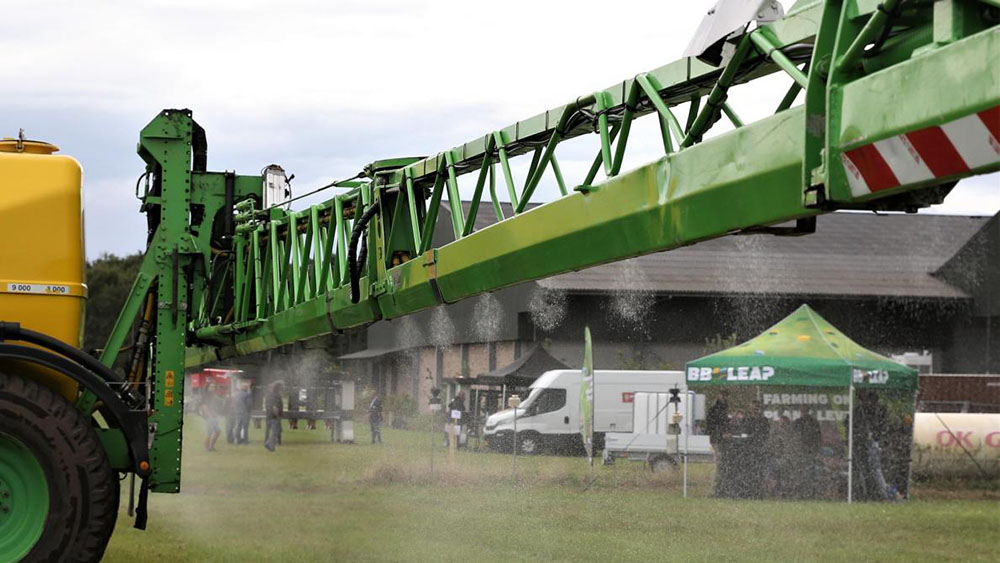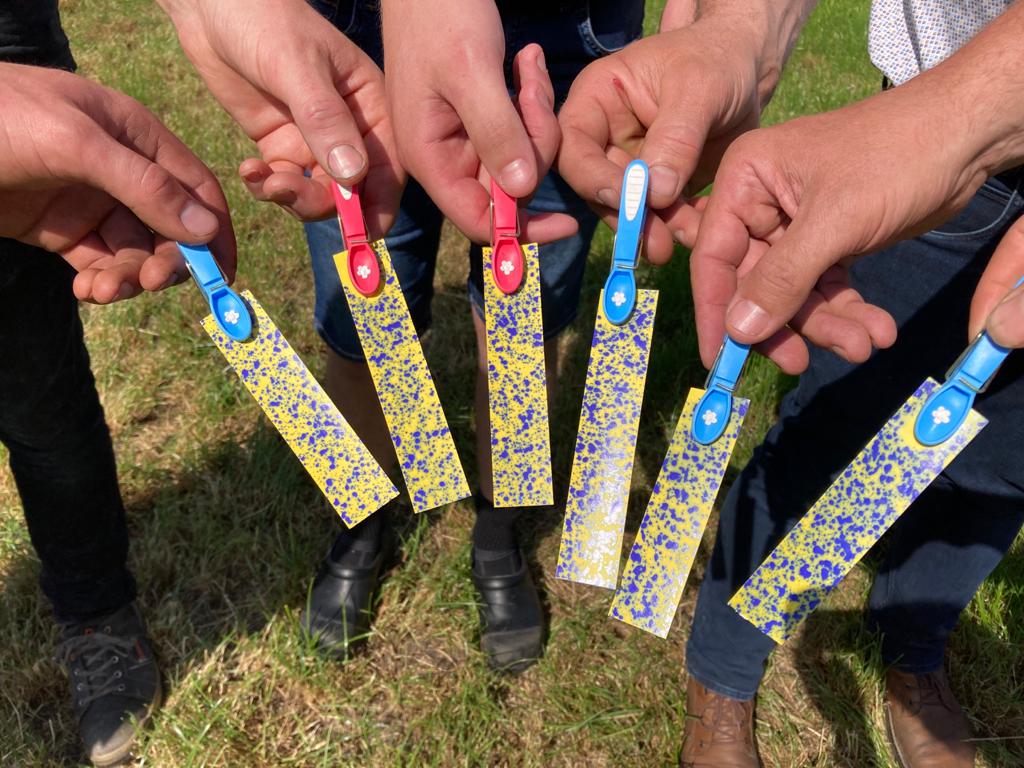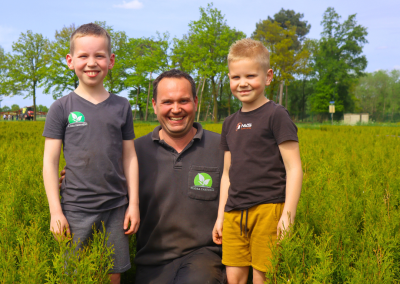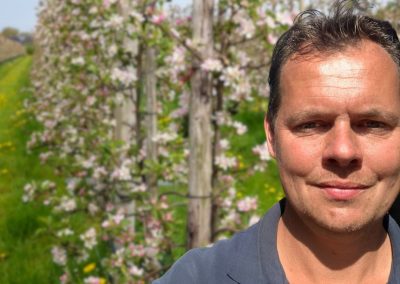 Link Magazine, published October 2022
Link Magazine, published October 2022
Dutch mega printer sprays every head of lettuce separately

Link Magazine, published October 2022
Dutch mega printer sprays every head of lettuce separately
At the moment, when farmers spray their fields – with nutrients or pesticides – all plants receive the same dose. Not very efficient because some want more and others don’t need that much at all. BBLeap from Rijen, the Netherlands, has developed innovative technology that allows farmers to determine which strategy they want to follow for each plant.
AUTHOR: Alexander Pil
BBLeap’s technology regulates sprayer dosing at plant level, allowing growers to consume less and harvest more.
Peter Millenaar of BBLeap:
“The rest of the world wants to know an average, we don’t.”
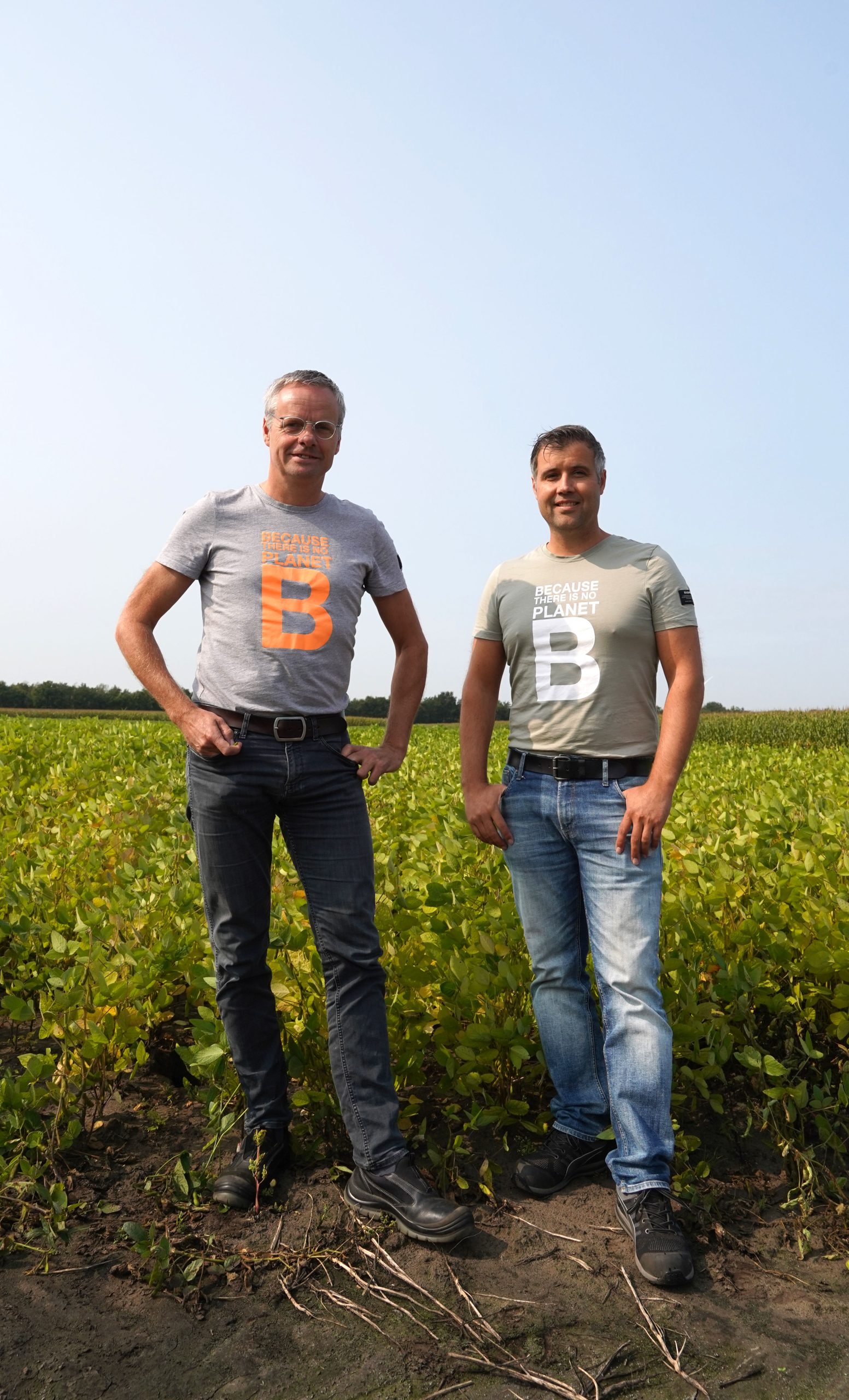
“No one can what we do.” Peter Millenaar of BBLeap doesn’t beat around the bush. “Some companies claim they can do it, but in practice they can’t. Only we have the technology in house that enables growers to treat their crops at plant level.” Whether it’s about nutrients or pesticides, the software and hardware of the company from the Dutch town of Rijen make it possible to provide exactly the right amount at each individual plant.
If you look closely at a field, you will suddenly see many variations. Differences in height, different soil or less sunlight because trees are in the way; all these factors create microclimates. “That can vary considerably on a plot,” says Millenaar. “You can see that in the way plagues arise; that is always on the spot where the conditions are optimal for the disease or pest. From there, it spreads to the rest of the field.”
When Millenaar walks across the field with a farmer, he can often indicate perfectly what should actually happen. “Actually, because he didn’t have the ability to make a distinction at all,” says Millenaar. “At the moment, he decides which strategy he will apply based on what he sees. The whole field gets exactly the same load, so some crops get too little and some too much. That is not efficient and, moreover, does not give the best results.”
A lot cheaper
An example. BBLeap recently helped a beet grower who wanted to control the weeds between his plants. When the grower and developers from BBLeap looked closely at the plot, it turned out that weeds were not a general problem. “Only in some places did it hinder the growth of the beet plants,” says Millenaar.
Satellite images from a few weeks earlier showed what was going on. The weeds grew exactly where the sugar beet leaves had last grown together. “These images were excellent input for our software that could tell the sprayer exactly where to spray pesticides and which areas to skip. As a result, the grower only treated about 20 percent of his plot. That is of course a lot cheaper. And the 80 percent of the beets that did not receive treatment also grew better because they were not disturbed,” adds Millenaar.
Just the right dose, in just the right place
Outsource as much as possible
You can compare the technology that BBLeap is developing, to a gigantic mobile printer that allows you to print a high-resolution image on the field, with each plant as a pixel. The biggest challenge is to gather the information needed to generate that ‘picture’. BBLeap uses all the resources it can find and combines them into one.
“It can come from satellite images, like at the beet grower, but also from the elevation maps that are in Google Earth, or from drones that fly over the field,” sums up Millenaar. There is a lot of development in sensors that can register the condition of the crop. “On a spray arm, they can detect where there is a lot and where there is little green, and whether there is a risk of emerging diseases.”
The sensor innovations are moving fast, but not fast enough for BBLeap. Millenaar: “We prefer not to spend our time on sensors, but we often cannot escape it. We always try to outsource as much as possible, especially when it comes to hardware, but because we are so far ahead of the pack, we regularly have to solve things ourselves.”
Where it often goes wrong, is that agriculture is a completely different world than, for example, industry. Millenaar: “The hardware must be able to withstand extreme weather conditions, from freezing cold to scorching heat, and of course rain. You are dealing with mobile devices, which means that components must be able to deal with shocks much better, and the physical connections also need extra attention.”
Blind spot
To further illustrate the challenge, Millenaar talks about BBLeap’s first customer who ordered the first system three years ago: Dutch potato grower and early adopter Jacob van den Borne. “We had only just started and he said: if what you say is true, show it. He now has two spraying systems with our technology, and at the moment, his third machine is being equipped with it so that he can process each potato plant individually.”
For the laymen in the field of potato cultivation; a potato cannot be harvested until the plant above the ground has completely died. This is a precondition for a good skin that ensures less waste later on in the process. The growing and dying process never progresses simultaneously on a plot. However, a potato grower cannot wait for all the plants to die in the autumn because he will run the risk of frost or too much rain potentially damaging all potatoes. So he has to have a solution for the plants that remain standing.
“Let’s say, on a plot, maybe half of it died naturally, and the other half is still alive, to a greater or lesser extent. They have to be sprayed,” explains Millenaar. “A tractor with a scanner on the roof drives across the field of Van den Borne and determines how green each plant is and how large the dosage of pesticide should be. So some get the full load and some get nothing. You might save half of your resources in the first round across the plot, and easily 90 percent in the second.”
BBLeap purchased the scanner from a Greek supplier. “We had a small struggle to get all the data out of the system,” says Millenaar. After all, the rest of the world wants to know an average across the full range of the scanner. “But not us, of course, we want to know everything at plant level. We got it working in the end. But I understand the supplier, because how we look at it, is a blind spot for the industry.”
Small crops get more

To BBLeap, it makes little difference what its systems deposit in the fields. In principle, all liquids are possible. In addition to suppressing weeds or accelerating the dying process in potato plants, the nozzles can also deliver nutrients in exactly the right amounts at exactly the right spot.
“In the US, we have an application that measures the size of each head of lettuce separately,” Millenaar gives another example. “We fly a drone over the field and based on those images, we can see how far each plant has grown. A machine learning algorithm then determines how much nutrients should be added.”
“Of course you can spray the same amount everywhere. That is what currently happens in most fields. But with our technology, the lettuce grower can make a distinction, with an accuracy of five by five centimeters,” Millenaar continues. “The crops that are much too small don’t get anything. It is a waste to invest in them so they are given up. Crops that are small get a lot of nutrients, the middle heads get a nominal dose, and the largest ones get nothing. During harvest, all heads are about the same size. By giving less nutrients because you can regulate the dose better, the grower has even more harvest.”
Also with the American lettuce grower, BBLeap initially encountered problems because it was running ahead of the troops. Drone suppliers said that it was a piece of cake to deliver the necessary images, but in practice it turned out to be a bit more difficult. “After all, you have to ensure that the strategy you have devised for a plant is also carried out exactly on that plant. That is centimeter work,” says Millenaar.
Takeover?
In Millenaar’s ideal world, farmers will soon be playing with the settings of their system themselves. For example, how much do they want to invest in crops that are lagging behind in growth? He sees a challenge there. “Almost everyone who visit a farmer’s field earns their money by selling as many nutrients or pesticides as possible. These are big boys who have opposing interests,” says Millenaar. “Everyone is talking about sustainability, but in the short term it simply means loss of income for those parties. Of course, they have their marketing well in order. But when push comes to shove, their sustainability measures are usually limited to a few solar cells on the roof.
The EU is setting increasingly strict requirements for the use of chemicals in agriculture. “The halving that Frans Timmermans has in mind, will really come,” Millenaar assures. “Therefore, it would be good if the large agricultural suppliers could find a model that would allow them to earn more when a farmer consumes less but achieves a higher quality and bigger harvest.” That will probably not happen in the short term, Millenaar realizes. “But there are always innovators, people who are at the forefront. Those are the clients who we’re aiming for. When we achieve success there and show that it works, the rest will follow.”
Another route that BBLeap is taking, is that the company is in the process of taking over the control for the machines of manufacturers of agricultural vehicles. Is it an option that such a player would take over BBLeap? “Our technology is so far beyond what is available elsewhere on the market that if we sold it, it would perish in such an organization. We want to set the standard first. Only then can we consider selling parts of our technology – for example under license.”
Alexander Pil is a freelance technology journalist.
This article has been published in www.linkmagazine.nl.
Configure your LeapBox now
A retrofit is possible to just about any brand and kind of sprayer. Learn more about
the possibilities of Farming On Plant Level with your sprayer.
